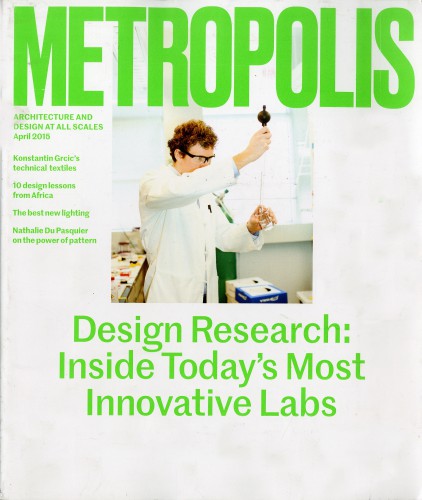The 19th century skyscraper was made possible by the Bessemer Process, the I-Beam, and Otis elevators. The 21st century Barclays Center, which required 12,000 customized computer-fabricated steel panels, was made possible with software originally developed for fighter jet design.
When I was interviewing the leaders of six different advanced materials and fabrication labs, the results of which are the feature article of this month’s Metropolis Magazine, I was constantly reminded how technology from unexpected places re-shapes design. It’s tough to say when and how this will happen next – perhaps it will be intelligent robotics, microscopic crystals, or 3D printing. The article also reveals multiple models for connecting scientific research to everyday practice. Was each lab working closely with manufacturers? Or engaging in highly speculative thought?
I was most intrigued by the Stanford Biodesign Collaboratory, which allows doctors to walk straight from a hospital to a workshop where they can tinker with medical device parts. It’s like putting a pigment factory next to a painter’s workshop; physical proximity to practice stimulates innovation.
Top Image: Cover of Metropolis Magazine, April 2015


